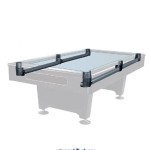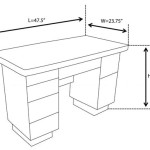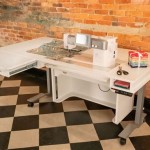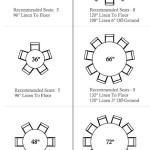Reclaimed Wood and Metal Console Table: A Fusion of Rustic Charm and Industrial Strength
The reclaimed wood and metal console table represents a compelling synthesis of contrasting materials, resulting in a furniture piece that is both aesthetically striking and functionally versatile. This type of console table leverages the unique characteristics of reclaimed wood, often sourced from old barns, factories, or even demolished buildings, and pairs it with the robust strength and clean lines of metal. The design embodies a commitment to sustainability, as it repurposes existing materials, and offers a distinctive aesthetic that complements a wide range of interior design styles, from modern farmhouse to industrial chic.
The growing popularity of reclaimed wood and metal console tables can be attributed to several factors. Firstly, there is an increasing awareness of environmental sustainability and a desire to incorporate eco-friendly elements into home furnishings. Reclaimed wood offers a tangible connection to the past, with each piece carrying its own history and character. Secondly, the juxtaposition of rustic wood and sleek metal creates a visually appealing contrast that adds depth and interest to any space. The metal components often provide structural integrity and a modern edge, while the wood introduces warmth and texture. Finally, console tables, in general, serve a practical purpose in providing storage, display space, and a focal point in hallways, living rooms, and entryways.
The construction of a reclaimed wood and metal console table typically involves several distinct stages. The first step involves sourcing and preparing the reclaimed wood. This may entail removing old nails, screws, and other hardware, as well as cleaning, sanding, and sometimes staining or sealing the wood to protect it from moisture and wear. The metal components are usually fabricated from steel, iron, or aluminum, and may be welded, bolted, or screwed together to form the table's frame or legs. The wood is then securely attached to the metal frame, using fasteners or adhesives, to create a stable and durable structure. The final step involves applying a protective finish to both the wood and metal to enhance their appearance and durability.
The Aesthetic Appeal of Reclaimed Wood
The aesthetic appeal of reclaimed wood lies in its imperfections and unique characteristics. Unlike new lumber, reclaimed wood often exhibits signs of age, such as nail holes, saw marks, knots, and variations in grain pattern. These imperfections, rather than detracting from the wood's beauty, add to its authenticity and charm. The patina that develops over time gives the wood a rich color and texture that cannot be replicated with artificial aging techniques. Different types of reclaimed wood offer distinct aesthetic qualities. For example, reclaimed barn wood is often characterized by its weathered gray tones and rough texture, while reclaimed flooring may feature a smoother surface and a more uniform color. The choice of wood will significantly impact the overall look and feel of the console table.
Moreover, the use of reclaimed wood allows for a high degree of customization. The wood can be cut, shaped, and finished to create a variety of different designs. It can be left in its natural state to showcase its raw beauty, or it can be stained or painted to match the surrounding décor. The wood can also be combined with other materials, such as glass or stone, to create a more complex and sophisticated design. The versatility of reclaimed wood makes it an ideal material for creating unique and personalized furniture pieces that reflect the homeowner's individual style.
From a design perspective, the integration of reclaimed wood introduces a crucial element of visual interest. The irregular grain patterns, knots, and imperfections in the wood surface break up the monotony of a space and add a touch of nature. The contrasting colors and textures of the wood and metal create a dynamic interplay that draws the eye and adds depth to the overall design. The reclaimed wood also contributes to a sense of warmth and comfort, making the space feel more inviting and lived-in. This is in contrast to the often cold and sterile feel of modern, minimalist interiors.
The Functionality and Versatility of Console Tables
Console tables serve a variety of functional purposes within the home. They are typically placed against a wall or in a hallway, providing a surface for displaying decorative items, such as lamps, vases, and picture frames. They can also be used as a convenient place to drop keys, mail, and other everyday essentials. In a living room, a console table can be positioned behind a sofa to create a visual barrier and provide additional storage space. In an entryway, it can serve as a welcoming focal point and offer a place to store shoes, umbrellas, and other outerwear.
The versatility of console tables extends to their ability to adapt to different design styles and spatial requirements. Console tables come in a wide range of sizes, shapes, and materials, allowing homeowners to choose a piece that perfectly complements their existing décor. They can be narrow and minimalist, or wide and elaborate. They can be made from wood, metal, glass, or a combination of materials. The functionality of a console table can also be enhanced by the addition of drawers, shelves, or cabinets. These features provide extra storage space for books, linens, or other items.
Furthermore, the height of a console table allows for it to be used in conjunction with other furniture pieces. For instance, a mirror can be hung above the console table to create a stylish and functional vanity area. Alternatively, a bench or ottoman can be placed underneath the console table to provide seating or storage space. The ability to integrate the console table with other furniture pieces makes it a highly adaptable and versatile piece of furniture that can be used in a variety of different ways.
The Sustainable Benefits of Reclaimed Wood
The use of reclaimed wood in furniture construction offers significant environmental benefits. By repurposing existing materials, it reduces the demand for new lumber, which helps to conserve forests and protect biodiversity. The harvesting of new lumber can have a detrimental impact on the environment, leading to deforestation, soil erosion, and the loss of wildlife habitat. Reclaimed wood offers a sustainable alternative that minimizes these negative impacts.
In addition to conserving forests, the use of reclaimed wood also reduces the amount of waste that ends up in landfills. Construction and demolition waste is a major source of pollution, and much of this waste consists of wood that could be salvaged and reused. By using reclaimed wood, we can divert this waste from landfills and give it a new lease on life. This helps to reduce pollution and conserve valuable resources.
The process of reclaiming and repurposing wood also requires less energy than manufacturing new lumber. The harvesting, processing, and transportation of new lumber consume significant amounts of energy, contributing to greenhouse gas emissions and climate change. Reclaimed wood, on the other hand, requires minimal processing and transportation, reducing its carbon footprint. By choosing reclaimed wood furniture, homeowners can make a conscious decision to reduce their environmental impact and support a more sustainable future. Moreover, consumers are increasingly interested in transparency in the supply chain. Knowing that a piece of furniture is made from reclaimed materials adds value, as it signifies a commitment to ethical and environmentally responsible practices.
Beyond the direct environmental benefits, the use of reclaimed wood also promotes the preservation of historical and cultural heritage. Many reclaimed wood sources, such as old barns and factories, represent significant historical landmarks. By reusing the wood from these structures, we are preserving a piece of our past and giving it a new purpose. This helps to connect us to our history and to appreciate the craftsmanship and ingenuity of previous generations.
In conclusion, the reclaimed wood and metal console table represents a compelling combination of aesthetic appeal, functionality, and sustainability. It offers a unique opportunity to incorporate eco-friendly elements into the home décor while adding a touch of rustic charm and industrial strength. The use of reclaimed wood not only conserves forests and reduces waste but also contributes to the preservation of historical and cultural heritage. The versatility of console tables allows them to be used in a variety of different settings, providing storage, display space, and a focal point in hallways, living rooms, and entryways. The contrasting textures and colors of wood and metal create a visually appealing piece of furniture that can enhance any space.

Parquet Reclaimed Wood Console Table Pottery Barn

Console Table Made From Reclaimed Wood Industrial H Shaped Metal Leg Sofa Ships Free

Safdie Co Reclaimed Wood Top Metal Frame Modern Contemporary Console Table 1 Bottom Shelf Brown Black Réno Dépôt

Reclaimed Barn Wood Console Table With Steel Metal Base Furniture Design

Cosmo Industrial Console Table Reclaimed Wood Metal Tables

Industrial Modern Console Table With Lower Shelf What We Make

Safdie And Co 39 5 In Reclaimed Wood Rectangle Console Table With Storage 81087 Z 07 The Home Depot

Buy Reclaimed Wood Console Table Industrial H Shaped Steel Legs 16 Depth In

Industrial Modern Console Table With Lower Shelf What We Make

Vicar Reclaimed Wood Console Table Brown Black Aiden Lane Target








